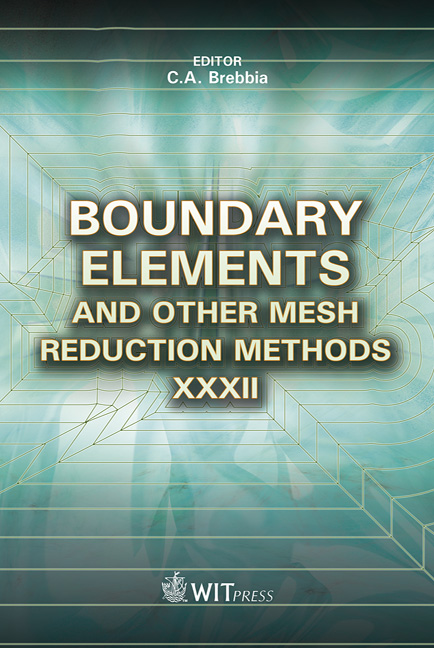Optimum Design Of Cut Off Walls Located In The Foundation Of Diversion Dams Using Boundary Element Method
Price
Free (open access)
Transaction
Volume
50
Pages
9
Page Range
53 - 61
Published
2010
Size
448 kb
Paper DOI
10.2495/BE100051
Copyright
WIT Press
Author(s)
S. A. Lashteh Neshaei, M. A. Mehrdad & N. Abedi Mahzoon
Abstract
Foundation design for hydraulic structures founded on permeable soils has been a concern among designers. Estimation of uplift forces and hydraulic gradient at any point, especially at key locations of a permeable media is one of important elements in designing concrete gravity dams on such foundation conditions. Among different numerical methods, the Boundary Element Method (BEM) employed for solving Laplacian equation of flow through porous media has been proved to be a powerful and effective tool for design purpose. The precision and speed of this method to evaluate the hydraulic gradient and potential at any point of foundation enable designers to find a suitable location of cutoff walls and filters. In this investigation, the impression of various parameters such as length and position of cutoff walls, position of filter, depth of porous foundation and type of soils has been considered and their effects on uplift pressure and hydraulic gradient are represented graphically. In particular, the results obtained from the present work clearly indicate that placing an extra cutoff wall between the two lateral walls has no considerable effect on the uplift force or hydraulic gradient, whereas locating a proper filter in a suitable place on the foundation can remarkably change the flow pattern and affect the design process. Results of this study could be of the great help for engineers to design diversion dams by efficient methods. Keywords: BEM, diversion dam, uplift pressure, hydraulic gradient, cut off wall, filter.
Keywords
BEM, diversion dam, uplift pressure, hydraulic gradient, cut off wall, filter





